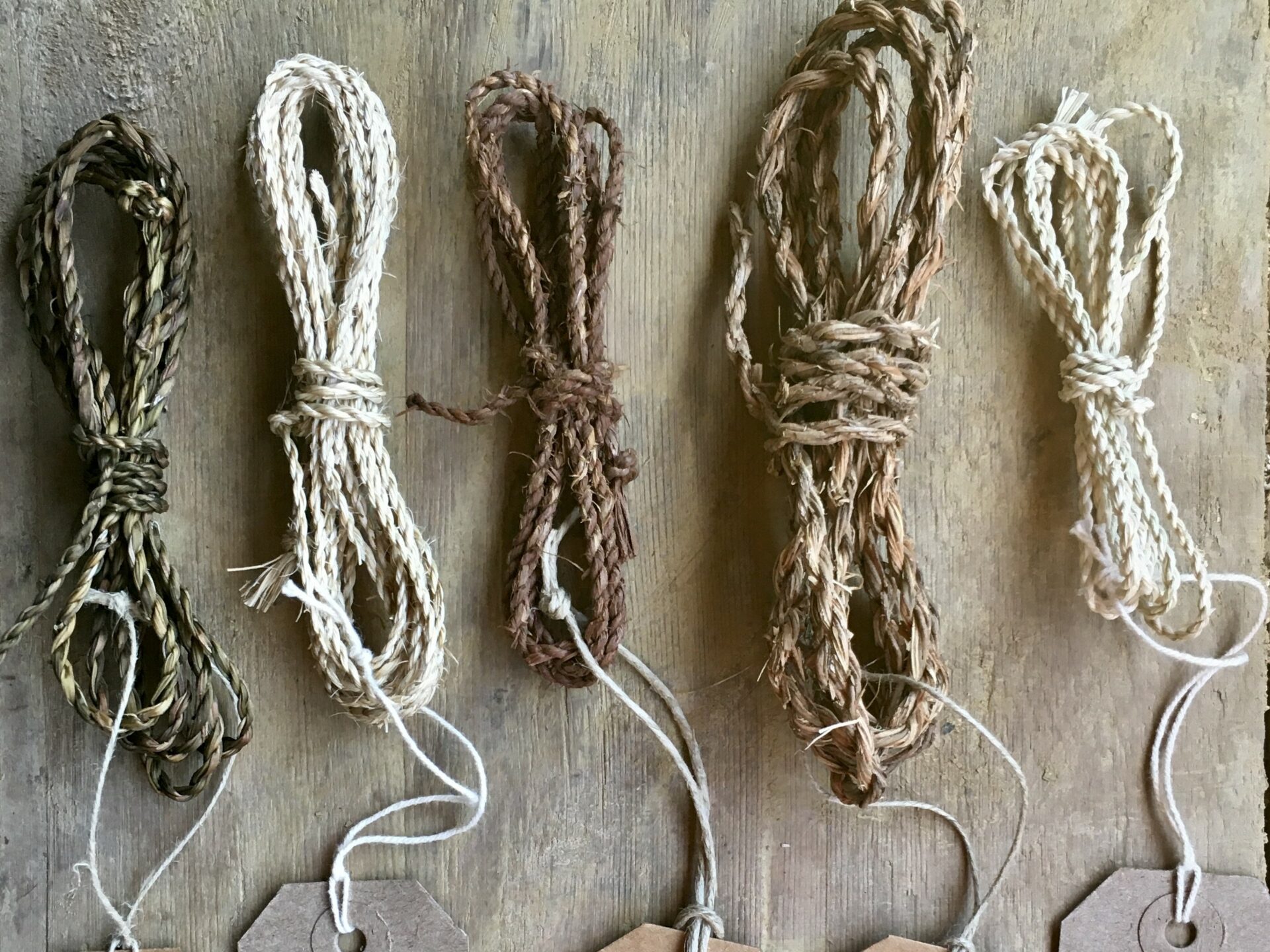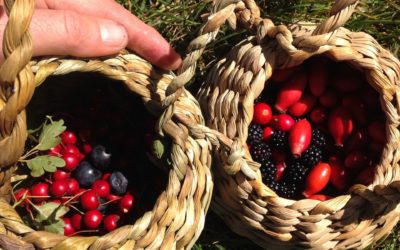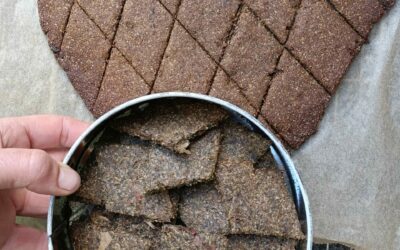Bramble Tips
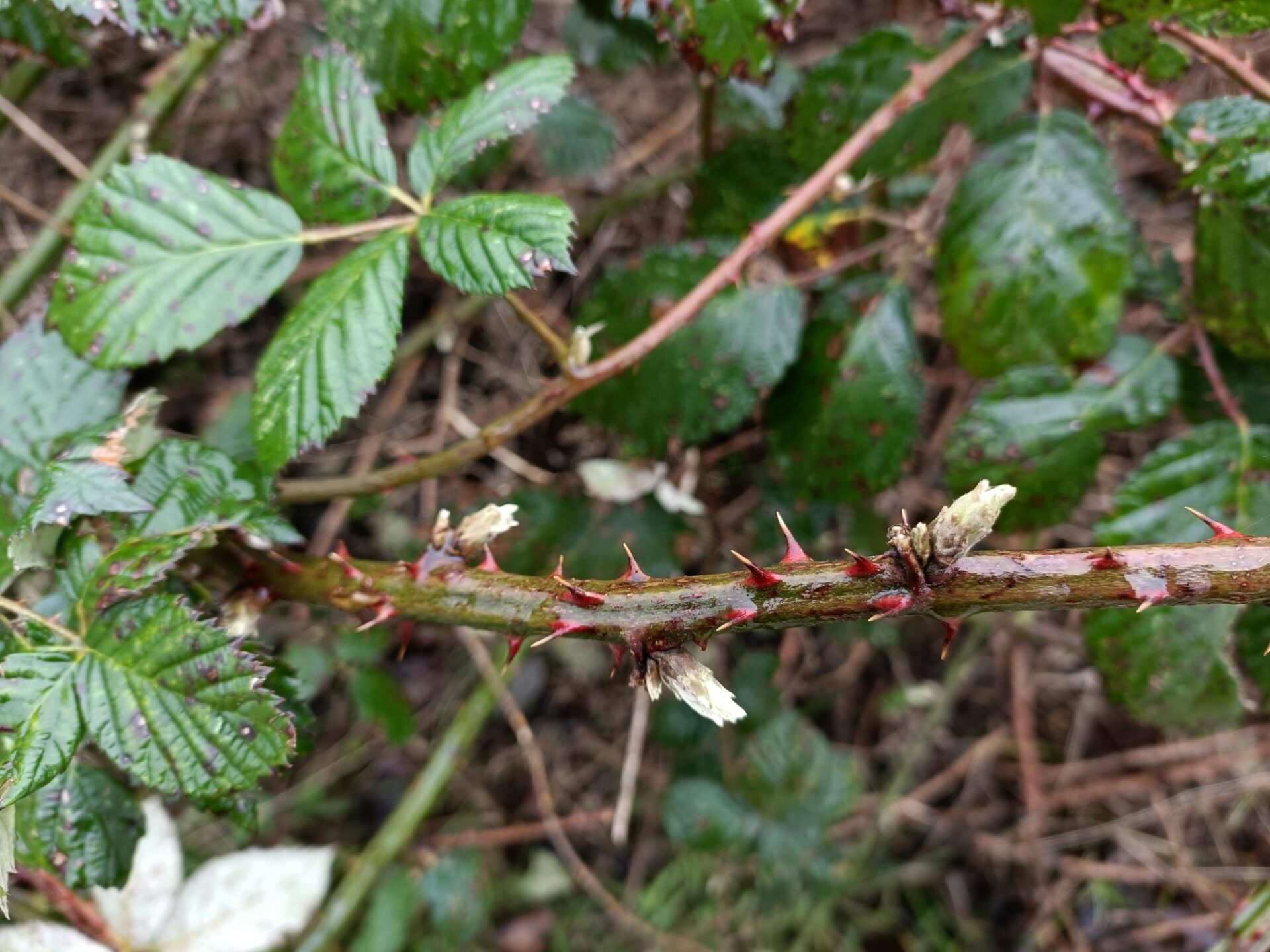
Lots of us know bramble as the blackberry bush, the one that gives us those delicious autumnal berries that stain our fingers and tongues.
Bramble plants are vigorous and plentiful in their growing habit, and the hardiness of the plant means it has a tendency to grow in neglected places. It can grow 3″ a day in the summer, and every time a tip touches the ground it sends down new roots that then sprout more stems. And so the plant spreads.
Many humans consider this plant a nuisance weed, but it’s really useful for us, and also a vital part of the ecosystem for many other creatures.
Being semi-evergreen, tangly and prickly, it provides food and shelter for many creatures. It’s essential throughout the year to a huge array of wildlife, to virtually every hedgerow inhabitant. Small mammals and birds seek shelter in it. Many butterflies and moths rely on it for nectar and food for their larvae, and bees feed on the flowers too.

The acorn that falls amongst bramble has a far better likelihood of growing to a tree as it benefits from the same thorny fortress that the animals recognise and make good use of.
For us humans, when there’s little to forage that’s edible in early spring, bramble tips are abundant. These small buds will become new shoots and leaves as the spring progresses. Just snap them off and pop them in your mouth.
Bramble tips are a personal favourite of mine… but you if you’ve not eaten them before, you might need to give them a chance. At first they may seem dry, rough and astringent in your mouth. But keep chewing them with your front teeth like a mouse to get to the inner part, and they yield a lovely creamy, ever so slightly lemony, nutty taste.
If you don’t mind fiddly work, you could pick out the crunchy inside of the tips / buds (to avoid the rough outer leaflets). And if you gather enough, you could add them to salads or lightly steam / stir fry them.
You can also make the tips into a tea, which has a delicate flavour. Herbalist Lucinda Warner says it’s cleansing and tonifying to drink.
I like to gather a few as I pass a bush, and just eat them as I’m walking, appreciating their fullness of new life at this time of year.
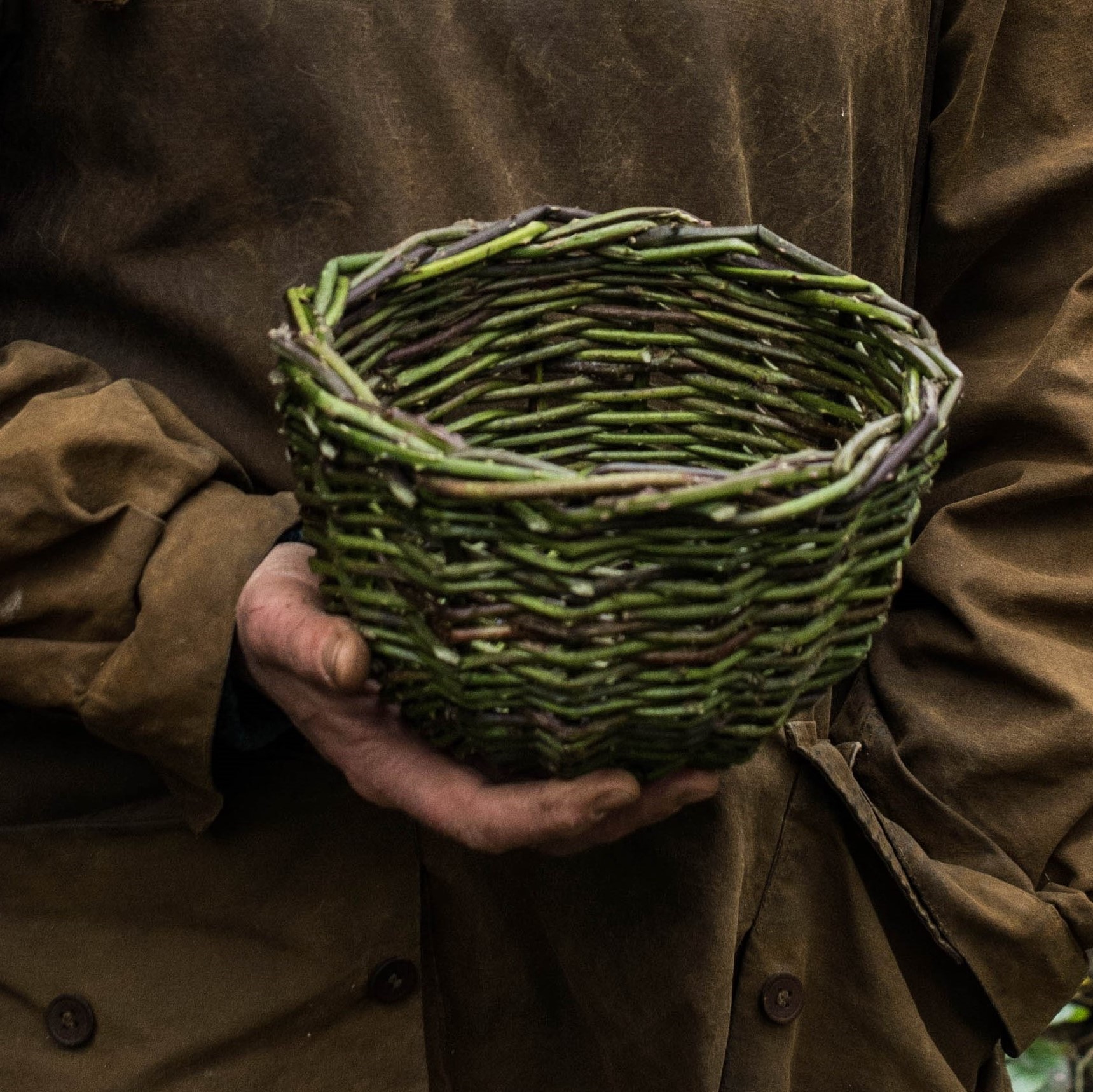
One of my other favourite qualities of bramble is how good it is for weaving and crafting, beacuse of its growing habit and strong fibres.
I’m offering Bramble Basket courses in Spring and Autumn this year, and it’s one of the plants we work with on the Natural Cordage course.
